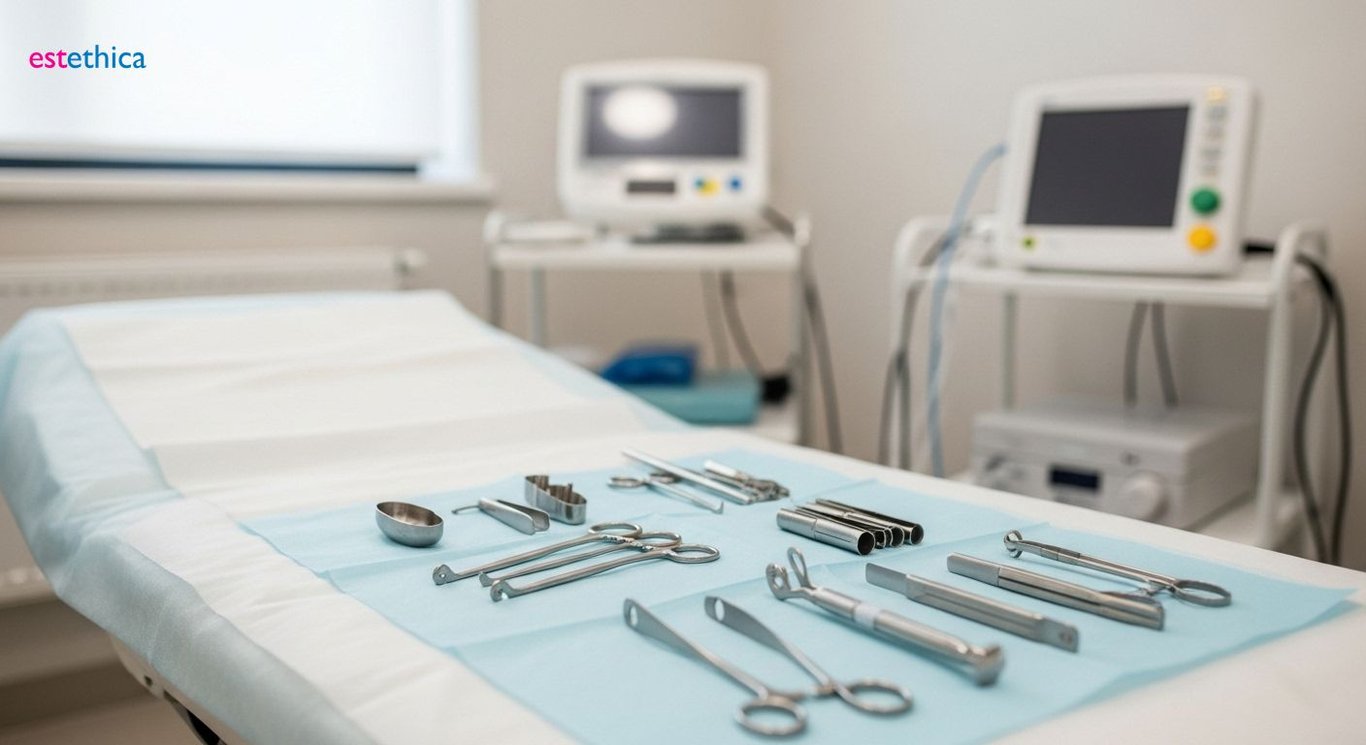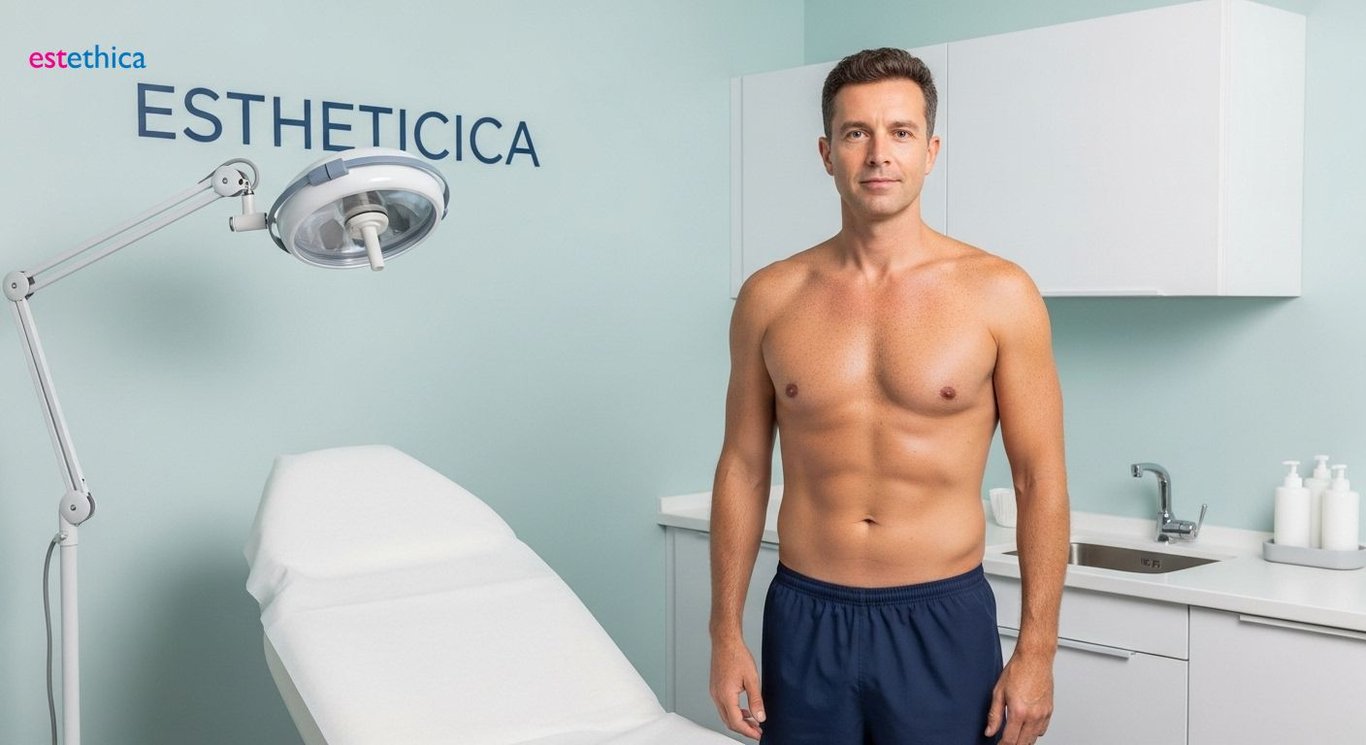Gynecomastia: Uncover the Path to a More Confident You
Uncover how to tackle gynecomastia and emerge more confident with expert guidance and solutions.
Welcome to your ultimate guide on gynecomastia—a condition often referred to as 'man boobs' that impacts the lives of many men worldwide. In this article, we'll explore what gynecomastia is, uncover the underlying causes, and guide you through the available treatments to help you regain confidence and self-assurance.
Decoding Gynecomastia: What Are Enlarged Male Breasts?
Understanding the Physical Manifestations of Gynecomastia
Gynecomastia is observed through distinct physical signs, primarily the enlargement of breast tissue in males. This condition, characterized by a perceptible and often tender mass beneath the nipple, can be a source of considerable distress. Unlike the diffused fat deposition seen in pseudogynecomastia, gynecomastia involves actual glandular proliferation.
One of the hallmark characteristics is the symmetrical expansion around the nipple area, which may extend outwards, altering the contour of the chest. The texture of the tissue is generally rubbery rather than fatty, providing a means to distinguish it from simple weight gain. Symptoms may manifest differently in each breast, with possible variations in size and sensitivity.
Key Distinctions in Gynecomastia
- Glandular Tissue: Features the growth of actual breast tissue, typically felt near the nipple.
- Hormonal Imbalance: Often brought on by hormonal changes or imbalances, affecting estrogen and testosterone levels, such as those explained on Gynecomastia Resolved: Understand Male Breast Reduction Options.
- Physical Symptoms: Characterized by a firm or rubbery feeling rather than soft, fatty tissue.
Diagnosing Gynecomastia: A Step-by-Step Approach
- Examine Physical Characteristics: Evaluate the firmness and location of breast tissue to differentiate it from fat.
- Medical Analysis: Check hormone levels to explore hormonal imbalances that may cause the problem.
- Differential Diagnosis: Exclude other possible conditions via physical examinations, such as tumors.

Beyond 'Man Boobs': Exploring the Root Causes of Gynecomastia
Hormonal Imbalance as a Primary Cause
Hormonal imbalances, particularly an increase in estrogen relative to testosterone, are frequently implicated in the development of gynecomastia. This imbalance can stem from various factors, including natural hormonal shifts during puberty or aging. For example, during puberty, a temporary surge in estrogen can cause breast tissue to develop, typically resolving on its own. However, in some cases, this imbalance persists or re-emerges later in life, leading to ongoing breast enlargement. It's crucial to identify and address these hormonal fluctuations to manage gynecomastia effectively. Sometimes, conditions mimicking hormonal imbalances can affect male breast aesthetics, such as visible fat deposits. Medical evaluation can help distinguish these.
Lifestyle and Medical Factors Contributing to Gynecomastia
- Medications: Certain drugs, like some antidepressants and blood pressure medications, can disrupt hormonal balance. For instance, ACE inhibitors used to treat hypertension may lead to increased estrogen levels, contributing to gynecomastia.
- Health Conditions: Hyperthyroidism, kidney failure, and liver disease can alter hormone metabolism. For example, chronic kidney disease can impair the body's ability to process hormones, indirectly promoting breast tissue growth.
- Substance Use: Alcohol and recreational drugs can interfere with normal hormonal functions. Chronic alcohol abuse, for example, can impair liver function, affecting estrogen metabolism and increasing the risk of gynecomastia.
Addressing Gynecomastia: Diagnostic Steps
- Comprehensive Assessment: Gather detailed medical history, perform thorough physical exam and related hormone assessments.
- Evaluate Medication and Substance Use: Review medications for potential links, adjust prescriptions if necessary and reduce substance abuse. For example, switching from an ACE inhibitor to an ARB may help.
- Treat Underlying Conditions: Manage health issues like hyperthyroidism or kidney failure to stabilize hormonal environment. Regular monitoring and treatment adjustments can reduce gynecomastia symptoms.

Male Breast Reduction: Surgical Solutions and What to Expect
Surgical Techniques for Effective Gynecomastia Treatment
Male breast reduction surgery is tailored with techniques like liposuction, excision, or a combination, depending on the underlying causes and the extent of tissue involved. Liposuction is often employed when excess fat is the primary issue, using small incisions to minimize scarring. Excision becomes necessary when there is a significant amount of glandular tissue or excess skin that needs removal. The choice of technique depends on the individual's unique anatomy and the desired aesthetic outcome. Modern approaches focus on achieving a natural-looking chest contour with minimal visible scarring. For instance, some patients may benefit from a combination of liposuction to remove excess fat and direct excision to address the glandular component.
Preparing for and Recovering from Male Breast Reduction
- Pre-Surgical Consultation: Establishes realistic expectations and discusses eligibility that helps ensure patient satisfaction.
- Post-Operative Apparel: Wearing compression garments supports healing and reduces swelling while maintaining the newly contoured chest shape.
- Recovery Timeline: Varies among individuals, but generally, most can resume light activities within a week.
Understanding Surgical Solutions for Gynecomastia
- Initial Evaluation: Determining the most effective method via comprehensive physical assessment and medical background review.
- Customized Surgical Plans: Crafting a treatment approach through methods, whether liposuction, excision, or a combination.
- Comprehensive Aftercare: Providing detailed guidance including wound care and activity limitations to ensure successful healing.

From Hiding to Confidence: Finding the Right Gynecomastia Treatment
Personalized Strategies for Overcoming Gynecomastia
Selecting the most appropriate treatment for gynecomastia involves assessing both the severity of the condition and its underlying causes. Mild cases often respond well to non-surgical treatments, such as hormonal therapies or lifestyle adjustments, which aim to restore hormonal balance and reduce breast tissue. However, more pronounced cases typically require surgical intervention to achieve significant and lasting results. The benefits of effective treatment extend beyond physical improvements, markedly enhancing a man’s self-image and psychological well-being.
Each treatment plan should be tailored to the individual, considering factors like age, health, and the specific characteristics of their gynecomastia. For example, adolescents experiencing gynecomastia due to puberty might initially be monitored to see if the condition resolves on its own. In contrast, older adults or those with more severe gynecomastia might opt for surgical solutions like male breast reduction to quickly and effectively address the issue. Consulting with healthcare professionals ensures that patients receive care that aligns with their unique needs and helps them achieve their desired outcomes by discovering the best treatment for gynecomastia.
Navigating Treatment Options for Gynecomastia
- Hormonal Therapies: Medications that balance hormone levels to reduce breast tissue, effectively manage milder gynecomastia caused by hormonal imbalances.
- Lifestyle Changes: Dietary adjustments and increased physical activity can reduce fat, thereby improving chest appearance in pseudogynecomastia, enhancing overall physical health.
- Surgical Intervention: Procedures like male breast reduction offer a definitive solution for severe cases, permanently removing excess glandular tissue and fat to restore chest contours.
Key Steps to Restoring Confidence After Gynecomastia
- Initial Consultation: A thorough assessment to determine the cause and severity of gynecomastia.
- Customized Treatment Plan: Creating a strategy based on individual needs.
- Continuous Support: Offering comprehensive care to ensure patient satisfaction and confidence.
Understanding Gynecomastia: Causes, Symptoms, and Treatments
Advanced Gynecomastia Treatment Using Liposuction and Excision Techniques
Comprehensive Care in Gynecomastia Treatment Enhancing Patient Confidence
Frequently Asked Questions
What exactly is gynecomastia, and how does it differ from "man boobs"?
What are the primary causes of gynecomastia in men?
What surgical options are available for male breast reduction, and what can I expect during recovery?
Can lifestyle changes or exercise help in how to get rid of gynecomastia naturally?
What non-surgical alternatives are available as the best treatment for gynecomastia without surgery?
Ready to discover your healthy beauty potential with estethica's expert team?
📞 Get Your Free Consultation!